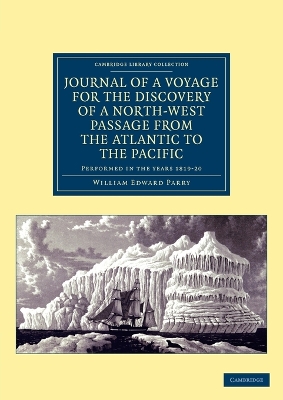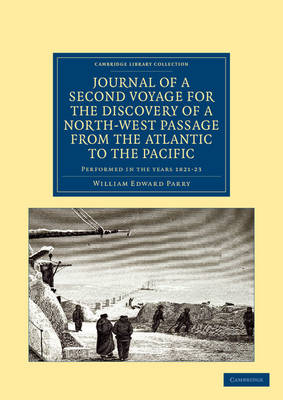Cambridge Library Collection - Polar Exploration
4 total works
In May 1824, the British explorer William Edward Parry (1790-1855) took to the seas on his third attempt to discover the North-West Passage, the legendary route to the Pacific along the northern coast of North America. It was a perilous voyage that he abandoned after the wreck of his ship, the Fury; however, during it he made some pioneering discoveries about the route's climate, meteorology, wildlife and nautical conditions, which influenced his successors and remain of interest to scientists and seafarers today. In these fascinating memoirs, first published in 1826, Parry documents his journey, revealing the difficulties he encountered and the phenomena he observed. Through extensive illustrations and vivid descriptions, he recalls the tumultuous weather and treacherous terrain that characterised - and finally defeated - the expedition, and expresses his gratitude to his fellow voyagers, for their bravery and determination in adversity, and their united efforts to save the doomed vessel.
Journal of a Voyage for the Discovery of a North-West Passage from the Atlantic to the Pacific
by Sir William Edward Parry
Published 1 December 2011
William Edward Parry (1790-1855) spent the early part of his naval career protecting the whale fisheries of Spitzbergen. He was later appointed to several Arctic expeditions, including three in search of the North-West Passage. This 1821 publication, reissued here in the unchanged second edition from the same year, describes the first of these voyages. Although unsuccessful, it provided valuable scientific data and experience that shaped subsequent expeditions. Noted for his care for his men, and his ability to quickly find solutions to difficult problems, Parry realised during this expedition the importance of keeping his explorers occupied during the winter, and started a newspaper and a theatre group. This first expedition established that, contrary to John Ross's 1819 account (also reissued in this series), a westward route through Lancaster Sound did in fact exist. It also began to map the many islands in the region.
After joining the Navy at thirteen, William Edward Parry (1790-1855) spent three years protecting the whale fisheries of Spitzbergen. He was later appointed to several Arctic expeditions. Although his first voyage in search of the North-West Passage ended without success in 1819, it provided valuable scientific data and experience. The expedition of 1821-3 was longer, with two winters spent on the ice, but also ended without success. Parry's account of that second voyage, first published in 1824, provides insights into the early days of Arctic exploration and the character of one of its pioneers, noted for his care for his men, his precision in navigation and scientific observations, and his ability to quickly find solutions to difficult problems. The book also includes descriptions of the 'Esquimaux' encountered by the explorers, and their communities as well as a vocabulary of their language.
One of the leading Arctic navigators of his age, William Edward Parry (1790-1855) led three expeditions in search of the North-West Passage (accounts of which are also reissued in this series). Parry's early career had been spent protecting the whaling fleet of Spitsbergen and this experience led him in 1826 to propose to the Admiralty an expedition to the North Pole. In order to reach further north than earlier attempts, Parry used sledge-boats that could be towed over the ice on runners, and then take to any open sea that the crew encountered. In 1827 the expedition attained a record latitude that stood for nearly fifty years. This illustrated account, published in 1828, was described by the Quarterly Review as a record of 'the patient, persevering, energetic, and undaunted conduct which British seamen are capable of displaying, in the most difficult, discouraging, and dangerous circumstances'.



